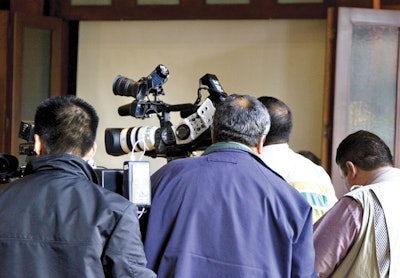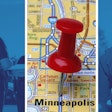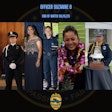 Photo: iStockPhoto.com
Photo: iStockPhoto.com
Maybe it's only natural to want to show off. Search and arrest warrants in hand, you’re on your way to the home of a suspect whose takedown will definitely lead tomorrow's headlines. Should you tip the press—maybe invite a local reporter and cameraman to ride along with you to get the story firsthand? Could this be a rare opportunity for you and the department to get some favorable publicity for your good work? Could there be anything wrong with a little positive exposure?
As private citizens, reporters are not bound by the Fourth Amendment. You are. Private citizens generally can't be sued for violating someone's Fourth Amendment rights. You can. Read on.
Wilson v. Layne
A team of U.S. and county officers in Maryland were working a fugitive apprehension team when they set out to serve three arrest warrants on Dominic Wilson. U.S. Marshals on the team invited a reporter and a photographer from the Washington Post to accompany them as part of a ride-along policy. When the officers made early morning entry into the address listed on the warrants, they encountered Wilson's parents, wearing only underwear and nightclothes. The reporter observed search activities from the living room, and the photographer took numerous pictures before the officers departed after finding that Dominic was not there. You know what comes next.
The Wilsons sued the officers, alleging that in permitting media personnel to enter their home, the officers violated the Wilsons' Fourth Amendment rights. The U.S. Supreme Court agreed.
Stressing that the privacy protected by the Fourth Amendment merits its greatest degree of protection within the home, the court quoted from an earlier opinion that said, "Physical entry of the home is the chief evil against which the wording of the Fourth Amendment is directed." And although "the officers had a warrant and were undoubtedly entitled to enter the Wilson home in order to execute the arrest warrant for Dominic," the media representatives had no role to play in serving the warrant. The officers' actions in inviting and allowing their entry therefore created grounds for civil liability. The court said this:
"We hold that it is a violation of the Fourth Amendment for police to bring members of the media or other third parties into a home during the execution of a warrant, when the presence of the third parties in the home was not in aid of execution of the warrant." (Wilson v. Layne)
Hanlon v. Berger
Agents of the federal wildlife service obtained a warrant to search a Montana ranch belonging to Paul and Erma Berger for evidence of wildlife crimes. The scope of search was limited to outbuildings and outside areas, excluding the residence. Agents invited a media crew from CNN to accompany the search team to observe and record the officers’ conduct in executing the warrant.
When the Bergers subsequently brought a civil rights suit against the officers, the Supreme Court repeated its holding from Wilson v. Layne: "Police violate the Fourth Amendment rights of homeowners when they allow members of the media to accompany them during the execution of a warrant in their home." (Hanlon v. Berger)
Why did the court apply the holding of Wilson—which relates specifically to a search of the home—to the search in Hanlon, which was conducted outside the home itself, being limited to outer structures and areas? This result follows from the court's history of extending to the residential "curtilage" the same level of Fourth Amendment protection enjoyed by the home.
Curtilage
In an 1886 case, the Supreme Court defined "curtilage" as "the area to which extends the intimate activity associated with the sanctity of a man’s home and the privacies of life." (Boyd v. U.S.) In many cases, the curtilage will include the yard, garage or carport, and smaller structures surrounding the home. The entire residential area—including both the home and the curtilage—has the same heightened protection of privacy under the Fourth Amendment. (Oliver v. U.S.) However, even within the curtilage, police may generally go wherever the mailman, deliveryman, or other members of the public are impliedly invited, such as walkways and front doorsteps. (U.S. v. Robbins)
There are no hard and fast rules as to what constitutes "curtilage," but in U.S. v. Dunn, the Supreme Court listed four factors that lower courts must consider in deciding whether certain areas or structures are within the curtilage:
1. How close is the area or structure to the home, or how far away? Nearby structures or areas are more likely to be within the curtilage; remote structures or areas are less likely to be.
2. Is there a common wall or fence enclosing both the home and the area claimed to be curtilage? Areas and structures inside the residential fence or wall are more likely within the curtilage.
3. What appears to be the primary use of the structure or area? Something closely connected to family and household activities is more likely part of the curtilage; commercial or secondary uses tend against such a finding.
4. Has the resident taken effective steps to prevent observations of the area by people passing by? A solid fence or high block wall is indicative of curtilage, whereas a low wall or chain-link fence is not.
There is no intrusion into the curtilage where media members stay outside the fenced yard on public sidewalks while officers and arrestees come out. (Gibbons v. Lambert) And the Wilson rule does not apply where the media is invited along during warrant service inside an area that is open to the public. (Wise v. City of Richfield)
"Aid of Execution"
In Wilson, the court acknowledged that in some cases, police could legitimately bring third parties with them to help serve the search or arrest warrant, and this would not violate the householders' rights. Said the court: "The presence of third parties during the execution of a warrant may in some cases be constitutionally permissible. Where the police enter a home under the authority of a warrant to search for stolen property, the presence of third parties for the purpose of identifying the stolen property has long been approved by this court and our common-law tradition." (Wilson v. Layne)
Other examples of third parties accompanying officers in aid of execution of warrants could include civilian technicians to help with searches involving computers, forensic testing, property identification, records retrieval, and other technical tasks requiring specialized knowledge, or relatives of missing persons brought along for possible identification. (Hunsberger v. Wood) (Civilian "ride-alongs" should generally not be allowed to participate in warrant service, for several obvious reasons.) In many jurisdictions, statutes require that certain searches of the offices or confidential files of doctors, lawyers, or ministers be conducted by a "special master" who is not a law enforcement officer. This is also "in aid of execution" of the warrant.
It may be tempting to want to see yourself on the evening news or on the front page of tomorrow’s paper, but before inviting the media to watch you in action, be sure their presence will not put you and the department at risk of civil liability.
Devallis Rutledge is a former police officer and veteran prosecutor who currently serves as special counsel to the Los Angeles County district attorney. He is the author of 12 books, including "Investigative Constitutional Law."
















